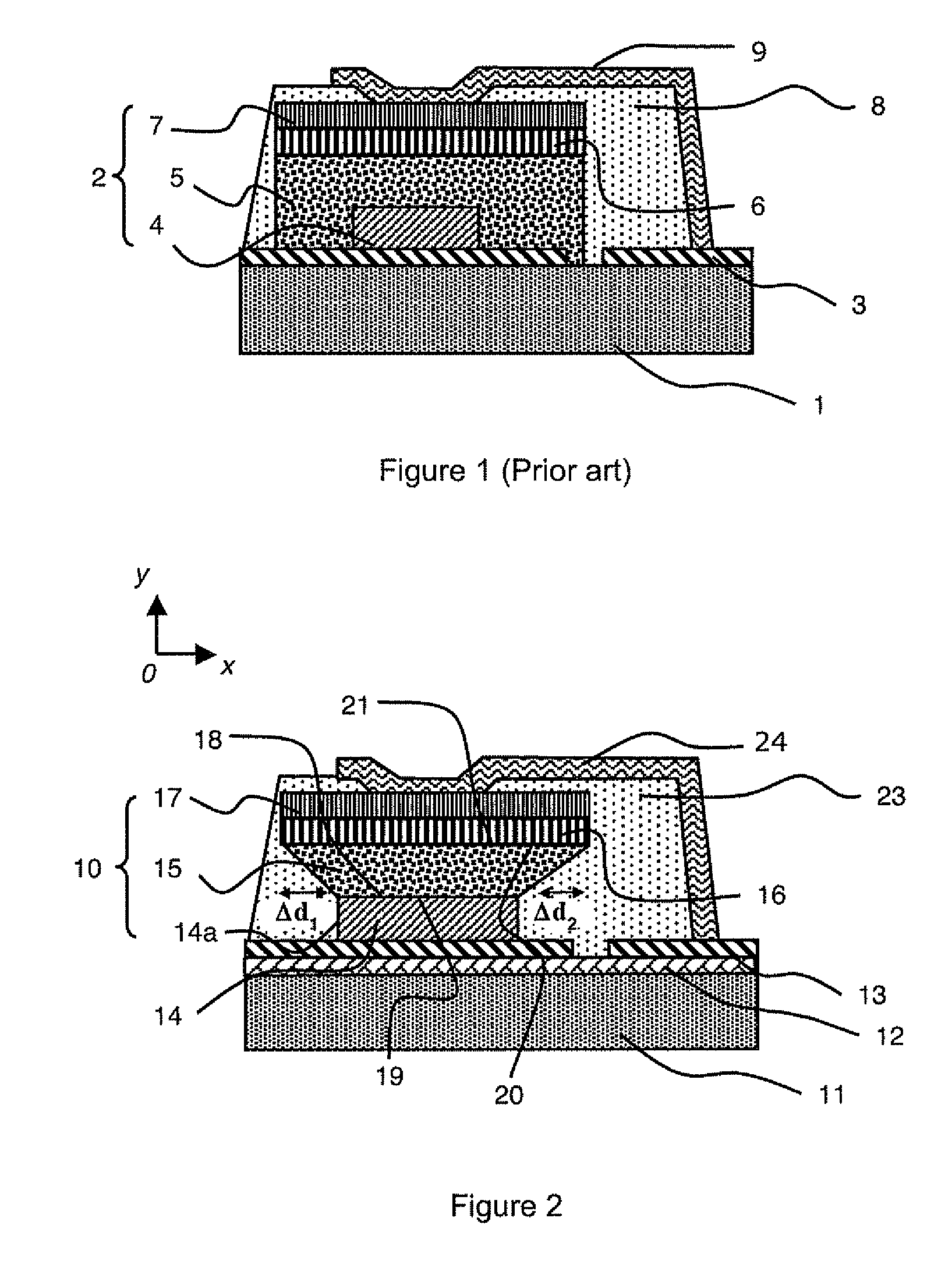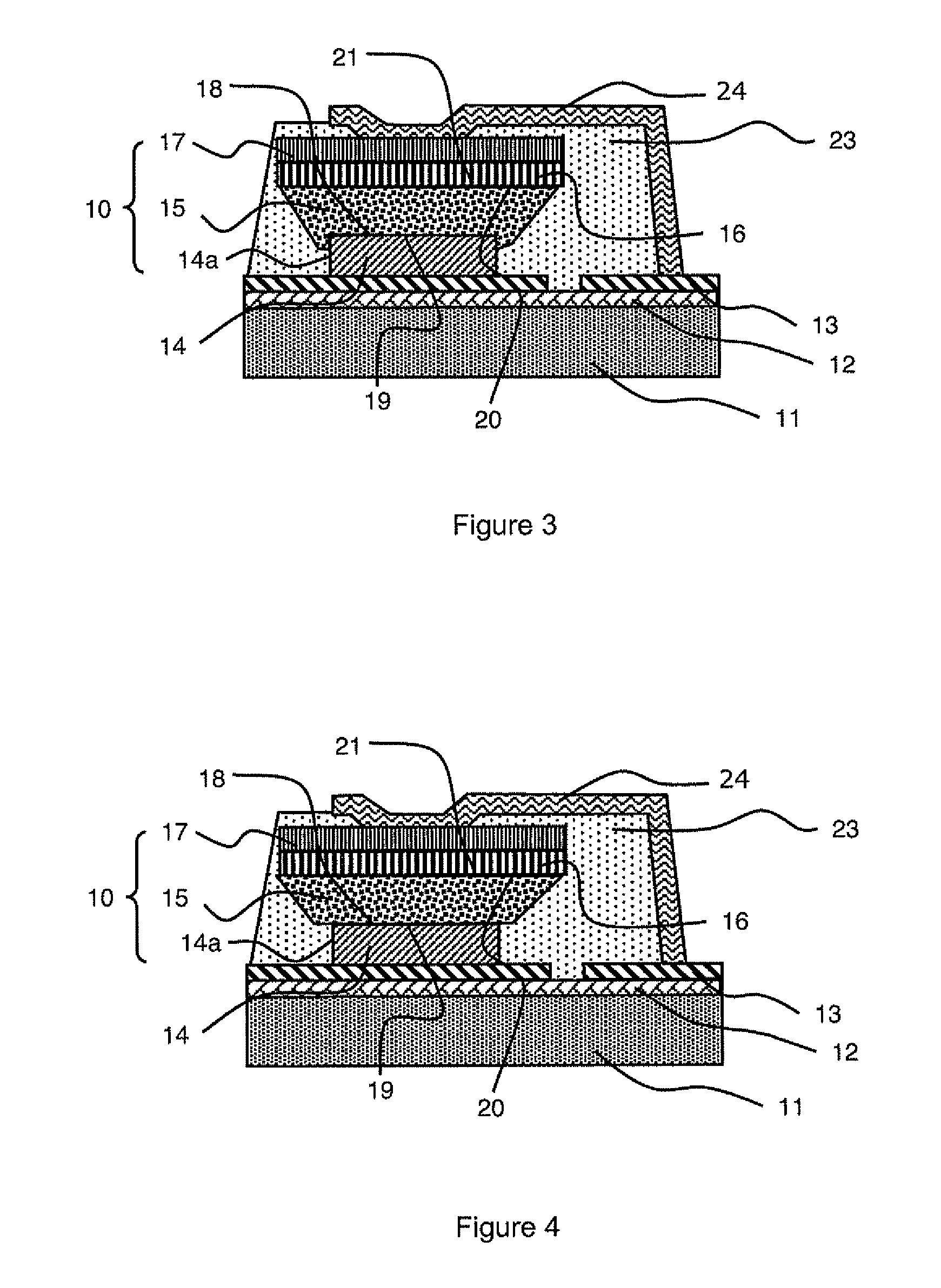Lithium microbattery and fabrication method thereof
a technology of lithium microbattery and fabrication method, which is applied in the field of lithium microbattery, can solve the problems of high cost, ineffectiveness, and high cost of lithium microbatteries, and achieves the effects of moderate electric resistance, long life and optimized energy storage efficiency
- Summary
- Abstract
- Description
- Claims
- Application Information
AI Technical Summary
Benefits of technology
Problems solved by technology
Method used
Image
Examples
example
[0078]A lithium microbattery having an optimized architecture has been produced by means of the fabrication method of the invention. A stack 10 is obtained on a silicon substrate 11 with a SiO2+Si3N4 passivation bilayer 12. Current collector 13 is formed by deposition of a thin layer of tungsten with a thickness of 250 nm by photolithography followed by wet etching, by immersion in a Tungsten Etch® Bath marketed by Micropur Technic, for 2 minutes at 25° C. Full wafer deposition is then performed successively for formation of the following thin layers:[0079]LiV2O5 with a thickness of 1 μm forming first electrode 14,[0080]LiPON with a thickness of 1.5 μm forming solid electrolyte 15,[0081]Si with a thickness of 0.1 μm forming second electrode 16,[0082]Ti with a thickness of 0.25 μm forming current collector 17.
[0083]Simultaneous etching of current collector 17 and of Ti / Si second electrode 16 is then performed by reactive ion etching with a SF6 plasma in a reactive ion etching reactor...
PUM
| Property | Measurement | Unit |
|---|---|---|
| length | aaaaa | aaaaa |
| length | aaaaa | aaaaa |
| thickness | aaaaa | aaaaa |
Abstract
Description
Claims
Application Information
 Login to View More
Login to View More - R&D
- Intellectual Property
- Life Sciences
- Materials
- Tech Scout
- Unparalleled Data Quality
- Higher Quality Content
- 60% Fewer Hallucinations
Browse by: Latest US Patents, China's latest patents, Technical Efficacy Thesaurus, Application Domain, Technology Topic, Popular Technical Reports.
© 2025 PatSnap. All rights reserved.Legal|Privacy policy|Modern Slavery Act Transparency Statement|Sitemap|About US| Contact US: help@patsnap.com



